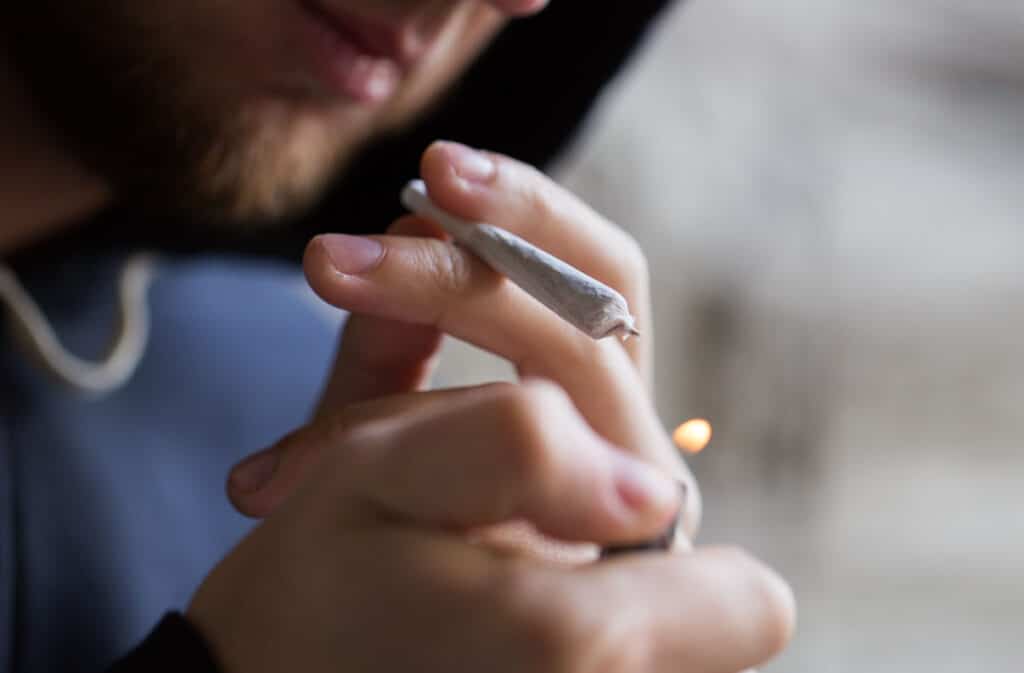Cannabis use disorder isn’t defined medically, and doesn’t seem to cause real problems. However, despite not instigating societal harm; yet another study is out trying to warn us about the prevalence of cannabis use disorder.
What’s a use disorder?
Like any other psychiatric condition; what is termed as a ‘use disorder,’ has no medical diagnosis. A medical diagnosis is a proof by way of a definable metric or test. This automatically means having a use disorder is a diagnosis up to the discretion of a particular doctor. These definitions are meant to meet certain behavioral criteria; but the truth is that doctors disagree all the time on everything. Without medical backing; there is no confirmed consensus when talking about psychiatric diagnoses, even with DSM manuals.
According to the National Institute of Mental Health, the definition of a use disorder is “a treatable mental disorder that affects a person’s brain and behavior, leading to their inability to control their use of substances like legal or illegal drugs, alcohol, or medications. Symptoms can be moderate to severe, with addiction being the most severe form of SUD.”
By definition, its all addiction, though; as the definition for addiction is the “compulsive drug seeking and use despite adverse consequences,” according to the National Institute on Drug Abuse. Why do these definitions overlap? Because there is no medical diagnosis defining each specifically. What it comes down to in either case, is an inability to control use.

There’s less debate over the existence of alcohol use disorder or opioid use disorder. They cause extreme damage to users and society at large; and we see it. We can watch those with the addiction, unable to control their use. Everyone likely knows someone who lost a job, or a spouse; or is dealing with an illness; or who got into some kind of an accident; because of drug use they could not control. The term ‘use disorder’ is easily understood in this context, as a behavior that is not only uncontrolled, but which causes problems.
Does cannabis use disorder exist?
Sure, if you’re only concerned about a manual made by a group nearly all associated with pharmaceutical companies; with the main purpose of prescribing psychotropic medication. The DSM manuals are by nature, full of ‘disorders,’ that have no medical definition.
As in, there is no test that can confirm a person is borderline, or schizophrenic, or suffering from a drug use disorder. Like it or not, there is no medical professional that can say there’s a medical diagnosis for cannabis use disorder. And realistically, there is no defined association between cannabis and large problems; in fact, so little, that after thousands of years of documented use, such damage cannot be explicitly pointed to. Do we question if alcohol causes problems? No!
As such, cannabis use disorder (CUD) is not medically defined, and cannot be tested for. Cannabis causes no actual addiction, so its not defined as an addictive drug. Nor does it cause damage to society; and any damage to one’s life, is minimal at best. Things like losing a job or spouse, or causing sickness or accidents; aren’t associated with cannabis like they are with other drugs. How many people do you know who were so out of control with weed, that they messed up their entire life?
For that matter, how many people do you know who are willing to prostitute themselves out for it, or choose weed over eating, or allow their children to be on the street so they can keep smoking up? This happens with alcohol, and meth, and opioids. It doesn’t with weed. Which indicates there is no use disorder attached. People, in fact, do not seem to have an issue not using weed, if there life calls for it. In other words; its uniformly not associated with behaviors that indicate a fundamental loss of control.
Perhaps the confusion is because unhappy people tend to keep doing things that make them feel better. This isn’t addiction, but self-treatment. Whereas this is problematic if it causes damage; it kind of isn’t, if it doesn’t. I’ve been using weed, and around weed smokers, for half my life. Never – literally not ever – have I met someone who has so much of an issue controlling themselves, that they cannot stop from smoking up. Not. One. Time. But I know a lot of alcoholics, smokers, and opioid users who lost their jobs, or families; who have extreme health issues; been in, or caused, accidents; or who overdosed and died.
New study on cannabis use disorder
Unfortunately, a lack of general logic or evidence over time, hasn’t stopped bad research from continually coming out on the topic. Even as this continues to make no sense, with nothing substantial backing it up in real life; article after article comes out to promote the idea that cannabis use disorder is a real thing. Case in point is this recent study.

The study is called Prevalence of Cannabis Use Disorder and Reasons for Use Among Adults in a US State Where Recreational Cannabis Use Is Legal. The purpose was to investigate how prevalent cannabis use disorder is in a regular population, specifically in adult-use legal states. It also looked into whether there were different reasons for use between locations.
According to the writers, the results of the study on cannabis use disorder indicate that the reasons for use didn’t change between locations, but the rate of use did; going from moderate to severe in different places. Researchers conclude from their data that cannabis use disorder is prevalent in legal states, and that moderate and severe use is more common in non-medical patients, or those who use it for both recreational and medical purposes.
How did researchers come to this amazing conclusion that a lot of people smoke weed? They conducted an in-person study. The study consisted of 1,688 participants, out of an original pool of 5,000 possible participants. These 5,000 were picked randomly from a pool of 108,950 adults who underwent a screening for cannabis use, as part of a primary care visit. Investigators looked at the time period of March 2019 – September 2019. The chosen 5,000 were offered a survey for the study.
In terms of sample selection, more specifically, “Sample selection included patients who reported no past-year use as well as stratified oversampling of patients with more frequent cannabis use and patients of minoritized racial and ethnic groups (including American Indian or Alaska Native, Asian, Black, Hispanic, and Native Hawaiian or Other Pacific Islander) in order to obtain representation of subgroups that are often underrepresented in research.“
The survey looked at how often the participants used cannabis in the past year. Out of the 5,000, 1,688 filled out the survey and gave consent. Of these, 1463 said they used cannabis in the past 30 days. “Respondents were asked about past-year use and more specific questions about past 30-day use, including reasons, mode, and typical frequency of cannabis use.” Investigators continued that the results “weighted to the primary care sample who used cannabis in the past 30 days (hereafter, patients who used cannabis).”
Massive issues with this study
The biggest issue with this study, is in how the sample was collected. The study’s stated aim was to see how prevalent cannabis use disorder is within legal state populations. This indicates that the study group being examined should reflect as accurately as possible, the makeup of the actual population of these locations.
Researchers did not do this though, instead they used something called stratified oversampling, for both frequent users, and minority populations. This means they included a greater percentage of participants from these populations, than exist by percent in reality. If we were only looking at why people use, this is useful for gaining information from underrepresented minorities, or focusing on those who do it more. But when looking to assess overall use rates; oversampling any part of a population, means getting skewed results.

Simply creating a sample which does not correspond to the actual population, is a huge flaw. Especially when that means including more heavy users in a way that is already known to be disproportionate, and then saying that a use disorder is prevalent. The oversampling of minorities can theoretically be worked out to correspond to actual population statistics, although this won’t account for the uneven collection of information. But if the purpose is to assess use rates and issues of control; perhaps automatically adding in more heavy users, is a fundamentally bad idea.
If you’re going to focus on a certain level of use, that’s what you’ll see. The investigators purposefully added in more frequent weed users than existed by percent in their own collected data. And they did that for an investigation literally meant to measure how often people use weed frequently. This is problematic. How can a study measure the overall prevalence of weed use (or abuse), if the sample used to measure it, is automatically skewed toward higher use?
Conclusion
The reality is that its easy to find bad study results on cannabis use disorder and an array of other topics. So much so that its coming up as an issue because of studies getting retracted. Researchers are dying to get published, and that promotes flawed research like this. Writers want stories, and that means bad titles get passed on. It’s a bad cycle. And it continues.
Let’s remember, that after years of nonsensical reporting about cannabis causing psychosis, its now coming out that this was never true. What does that say for all the research that tried to scare us about inducing schizophrenia, and what does it say for those who created it? The idea of a cannabis use disorder might get pushed now; but that doesn’t mean it won’t be invalidated as people come to their senses.
Hello cannabis supporters! Thanks for being with us at Cannadelics.com; an independent publication looking to bring you eye-opening reporting of the cannabis and psychedelics spaces. Come our way frequently to keep up with the Joneses, and get yourself signed up to the Cannadelics Weekly Newsletter, so you’re always up on what’s going down.









